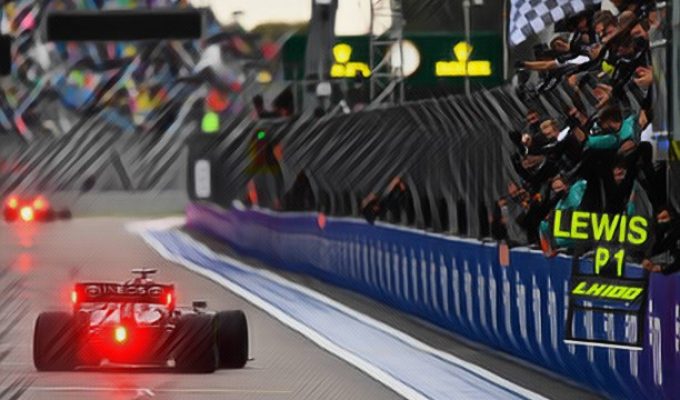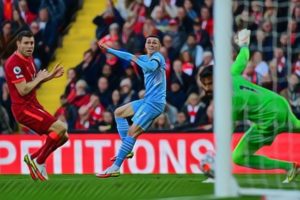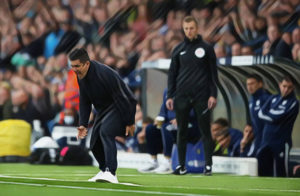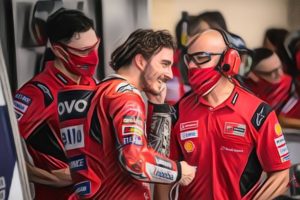Lewis Hamilton won a dramatic Russian Grand Prix to become the first driver to win 100 Formula 1 races.
Hamilton was running behind compatriot Lando Norris as it started raining in places at the Sochi Autodrom with only a handful of laps left.
Whereas Norris stayed out on his dry tyres, however, Hamilton was told by his Mercedes pit wall to box for intermediates with just four laps to go.
As the rain then got heavier, Norris struggled to keep his car on the track and began losing masses of time to the Mercedes driver, Hamilton eventually passing the McLaren man with just two-and-a-half laps remaining.
It was heartbreak for the 21-year-old, Norris in control of proceedings until the weather changed.
He ultimately finished in 7th after pitting for intermediate tyres on the penultimate lap, being overtaken by drivers that had boxed a few laps prior.
Max Verstappen finished in second behind Hamilton. It was a superb result for the Dutchman – starting last after taking an engine penalty, Verstappen had been running in 7th until pitting for intermediates, also jumping Fernando Alonso and Carlos Sainz in the pitlane thanks to an excellent stop by the Red Bull crew.
Sainz rounded out the podium in his Ferrari. The Spaniard had been leading for the first 13 laps after overtaking Norris round the outside of Turn 2 at the start but struggled with degradation during the middle part of the race, before making the right call at the right time onto intermediates to recover back onto the podium.
100 up for Hamilton – but not as good a weekend as hoped
His first victory since the British Grand Prix five rounds ago in July, Hamilton will have been delighted to have finally broken the 100 race-win barrier.
Another remarkable milestone achieved by the seven-time world champion, he made hard work of it – starting in fourth, the 36-year-old lost three places on the opening lap after being boxed in by Norris on the 900m run down to Turn 2.
He then got caught in a DRS train for the first third of the race, stuck behind George Russell, Lance Stroll and Daniel Ricciardo, allowing Max Verstappen to close within five seconds of him just a few places behind.
After those three drivers had pitted, however, the 36-year-old was released into clean air, allowing him to improve his pace and set a new fastest lap thanks to his tyre preservation skills.
Such was his pace (and a poor pit stop for Ricciardo), the Mercedes driver emerged in front of that trio and only two places behind Norris after his solitary stop, soon closing to within 2 seconds of the 21-year-old driver thanks to his superior pace.
Whether he would have been able to overtake his compatriot had the weather stayed dry is uncertain – Hamilton had struggled to pass Norris’ teammate Ricciardo because of the speed of the McLaren, and Norris had managed his tyres expertly to improve his lap times once Hamilton had caught him.
However, after the weather changed, the Mercedes pit wall made an inspired call to pit their driver, a decision that proved to be the correct one when Hamilton overtook Norris for the win less than two laps later.
The victory will have tasted just as sweet as his first, achieved all they way back at the Canadian Grand Prix in his rookie season in 2007.
It also took Hamilton back into the championship lead, overturning his five-point deficit to Verstappen coming into the weekend to leave Sochi leading the Dutchman by 2 points.
Yet with the Red Bull driver starting from the back of the grid, Hamilton and Mercedes might have expected a larger points swing at a track they have won every race since its introduction onto the calendar in 2014.
Now entering the final third of the season, Verstappen will fancy his chances of claiming his maiden F1 title. Having taken his engine penalty, he is free to give it everything with a brand-new power unit, the Dutchman having also won at three of the circuits still left on the calendar.
With Hamilton also on the last of his three allocated engines, it is also likely that the reigning champion will have to start from the back himself at some point in the future.






